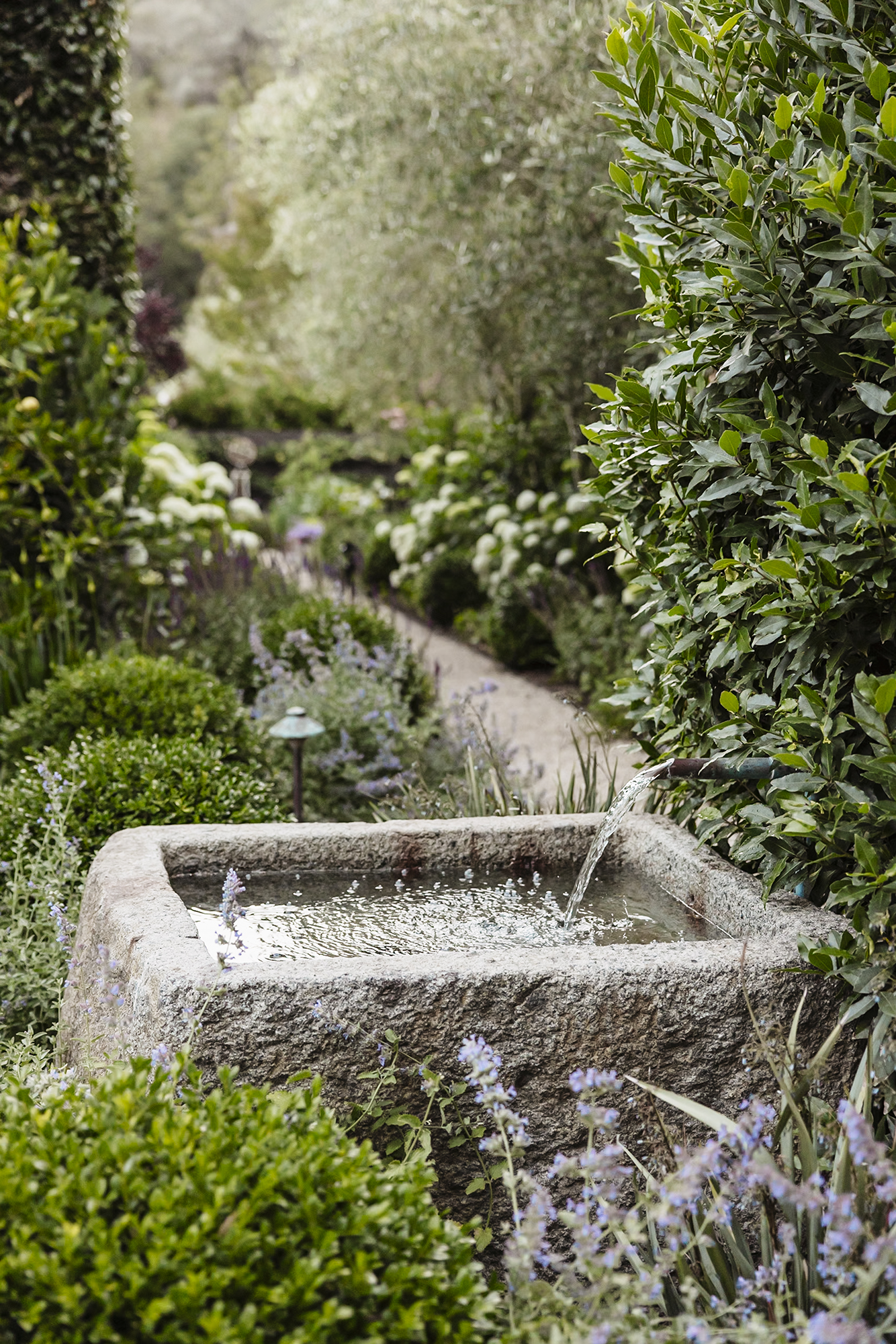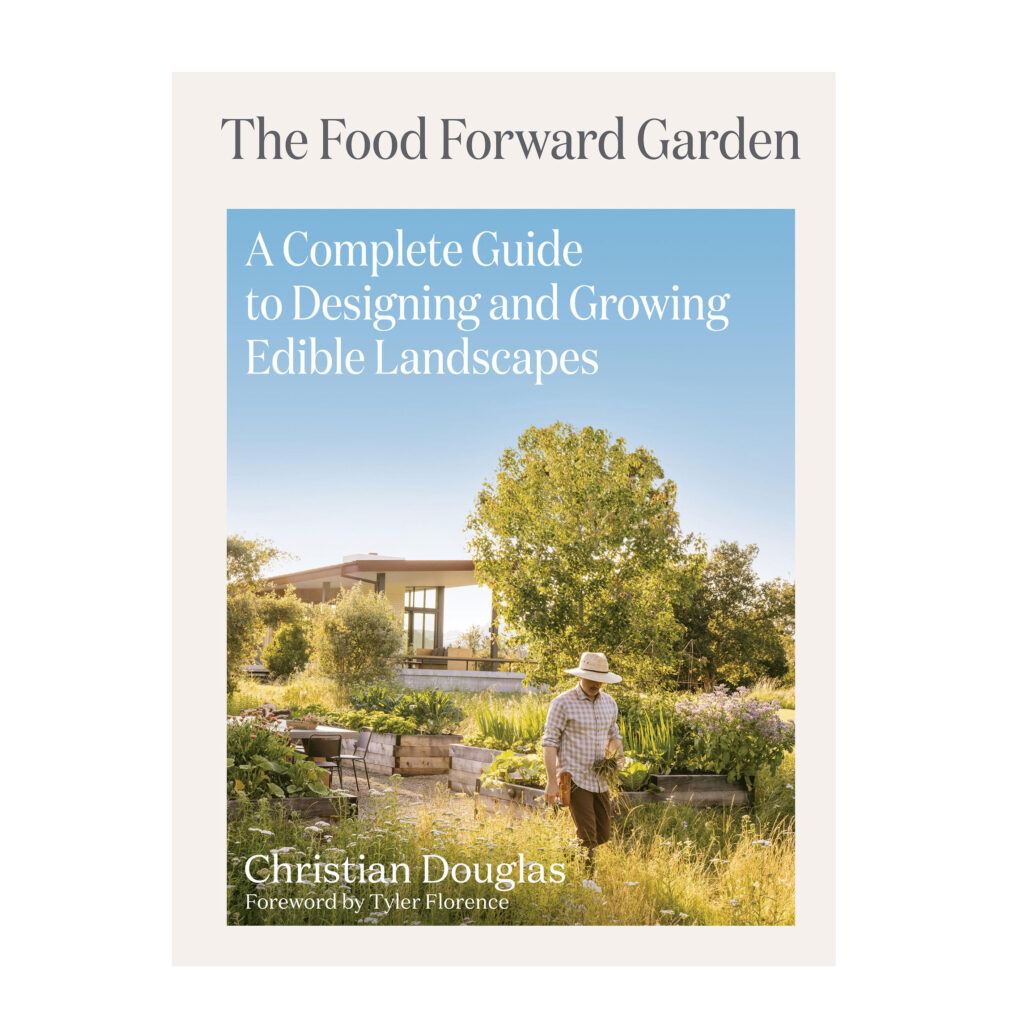
7 Ways You Can Turn Your Vegetable Garden into a Beautiful Work of Art
Landscape designer Christian Douglas teaches us how to mix flavor with flair.

From The Food Forward Garden by Christian Douglas (Artisan Books). Copyright © 2024. Photographs by Sasha Gulish.
What if your vegetable garden could be more than just a line of raised beds and be a space where food and function blend in a lush landscape? In his new book, The Food Forward Garden: A Complete Guide to Designing and Growing Edible Landscapes, acclaimed landscape designer and 2025 Home and Design Awards winner Christian Douglas turns traditional garden design on its head, showing how to blend the beauty of edibles with the elegance of ornamental landscaping. Drawing from his mastery of classical design and deep-rooted passion for regenerative agriculture, Christian invites us to see edible gardens in a whole new light: chic, purposeful, and bursting with delicious possibilities.
Lavish Layers

From “The Food Forward Garden” by Christian Douglas (Artisan Books). Copyright © 2024. Photographs by Sasha Gulish.
When crafting a plant palette and design perspective, Christian approaches each garden as a canvas, seamlessly blending color and texture to suit any style. His creative process always starts with identifying the tonal temperature that will set the mood and harmonize the space. Warm and cool colors are typically found in every landscape, but Christian prefers to lean into one more than the other to visually shift the narrative. He suggests tapping into earthier tones by gravitating toward golden grasses, orange poppies, chocolate cosmos, and wild strawberries. For cooler hues, select silver fescues, blue penstemons, azure aloe, or rosemary.
Playing with texture is also key to a dynamic design. Christian recommends the staircase effect, transitioning from a balance of groundcover plants, small grasses, or flowering perennials to medium-size shrubs, then taller shrubs or trees. He recommends incorporating a variety of leaf shapes for texture, contrast, and a sense of movement. Try a mix of rounded leaves, strap-like foliage, and flowing grasses, which all catch the wind and light differently, contributing to the overall impression of lushness.
Structural Statements

From “The Food Forward Garden” by Christian Douglas (Artisan Books). Copyright © 2024. Photographs by Sasha Gulish.
The most beautiful edible gardens are more than just their plantings. Christian’s work always weaves in design accents to give structure and story to the surroundings with the sense of immersion being essential. Every project prioritizes food in the landscape but also highlights other elements, such as water sources for pollinators with design-forward features like stone bowls or a steel trough, which can add unexpected beauty while providing functionality.
Fun with Foraging

From “The Food Forward Garden” by Christian Douglas (Artisan Books). Copyright © 2024. Photographs by Sasha Gulish.
Christian advocates for blending cultivated crops with foraging plants to spark curiosity and foster a deeper connection to the garden. “The key is finding the right balance that works for your space and resources,” he says. He is passionate about weaving in foraging opportunities—think strawberries, huckleberries, and blackberries—throughout the garden.
More Than a Meadow

From “The Food Forward Garden” by Christian Douglas (Artisan Books). Copyright © 2024. Photographs by Sasha Gulish.
Wildscaping and regenerative additions are becoming increasingly popular, but Christian has long mixed biodiverse habitats with edible species. The goal is to create a garden that’s a beacon for powerhouse insectary and avian populations, which most food species rely on. Focus on planting native edibles such as huckleberry, strawberry, and elderberry. From there, add in native flowers for pollinators and choose Mediterranean edible companions that will thrive in a dry climate, such as pomegranate, artichoke, and rosemary.
Not-So-Boring Gardens

From “The Food Forward Garden” by Christian Douglas (Artisan Books). Copyright © 2024. Photographs by Sasha Gulish.
Garden borders often feel like an afterthought, but Christian has developed a formula for a lush, purposeful landscape that blends effortlessly into the rest of the design. He admits there is no one-size-fits-all but suggests starting with an overstory tree layer and then adding in a mix of mid-layer plants, flowering species, berry bushes, and groundcovers. Utilizing slopes is also a great way to produce food while holding back your hillside. Utilize raised beds or walls to tie in with the overall landscape aesthetic while carving out outdoor rooms and purposeful pathways.
Narrow in on Nooks

From “The Food Forward Garden” by Christian Douglas (Artisan Books). Copyright © 2024. Photographs by Sasha Gulish.
Rather than letting side gardens become receptacles for stowaway utilities and trash cans, rethink these areas for growing food. The key to success is to not use plants too big for the space or anything with thorns in high-traffic areas. Match the scale of the nook and decide where you want eyes to be drawn, then highlight that spot with an interesting plant pairing, mixing texture and color. A go-to combination is alpine strawberries or yerba buena along stepping-stone pathways or narrow steps.
Petite Patios and Pots

From “The Food Forward Garden” by Christian Douglas (Artisan Books). Copyright © 2024. Photographs by Sasha Gulish.
Design still applies when it comes to small-footprint gardening. Whether you have petite plots, patio pots, or a balcony, there is still an opportunity to create a pop of color and seasonality. Planters are one of Christian’s favorite ways to experiment, providing an easy way to accessorize or introduce interesting materials, joinery, or craftsmanship within the space. For height and privacy, look to cordon trained fruit trees, which are single-trunk and have no broad branching, making them the perfect choice for tight spaces and upward growth. Never underestimate the real estate value of one pot or a narrow border. Edible low-growing fruits and herbs make perfect companions to citrus or other fruiting shrubs. Christian suggests pairing a compact blueberry or kumquat with an everbearing strawberry and herbs; or an espalier apple or pear tree trained vertically against a wall or fence with herbs and berries, which provide nice layering and a pop of color, even in containers.
Buy the Book

From “The Food Forward Garden” by Christian Douglas (Artisan Books). Copyright © 2024. Photographs by Sasha Gulish.
We only recommend things we love. If you buy something through our site, we might earn a commission.
